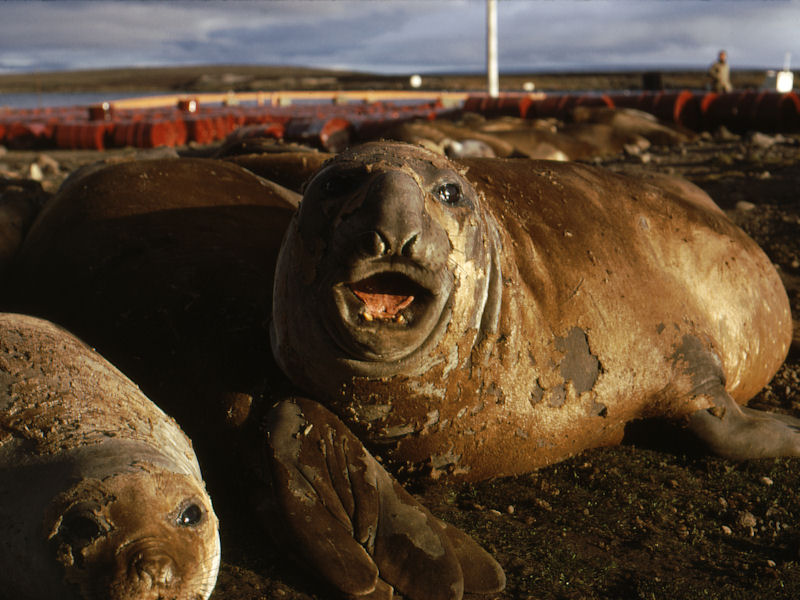Photo
album: "Visit of Port-aux-Français"
Fly
over a photo with the mouse to enlarge it
Click
on a photo to open it in a new window
We
are going on with our visit of Port-aux-Français. It is not going to be an
exhaustive visit but only an outline of the main buildings seen from outside.
Few research laboratories are shown.
 |
We are now at the rear of the
restaurant. The parked car is the steward's and the orange-coloured
trailer is used to collect refuse. The several birds at foreground are
seagulls, adults have a white body and dark wings while young ones are
uniform-grey coloured. They tend to rally where there is a possibility to
find food. |
 |
The ambulance is parked in front of
the hospital.
|
 |
General view of the port and the
pier. |
 |
The barges used to load and unload
the ship and, also, to travel to different places inside the Golf of
Morbihan. |
 |
The two helicopters of the French
air forces, in front of the metallic drums which contain their fuel
reserve. They are there only during the summer campaigns. |
 |
The farm. There hens and ducks are
kept, pigs are bred. Lettuces, radishes and tomatoes are grown inside the
greenhouses. It is there that the sheep make their last stop, between the
isle Longue where they live and the kitchen. |
 |
"Général de Gaulle
Square" says the plaque fixed at the base of the flagpole. We can see
only the French and the Soviet flags because the photo was taken before
the arrival of the US scientific team. |
 |
How far are we from the main towns
of the Earth? Paris, 12700 km - New York, 17000 km - Tokyo, 11700 km -
Melbourne, 11700 km -Adelie Land (Dumont d'Urville), 4600 km - Mirny (one
of the Soviet Antarctic bases), 2300 km - etc. |
 |
Towards the neighbourhood of
Port-aux-Français . The sign tells direction to: the radio emitting
centre; The GRI and CINOC (ciel nocturne, i.e. nocturnal sky)
laboratories;
the weather service and the rocket launching base. |
 |
Behind the gas-oil tanks, we can
see a lot of elephant seals. |
 |
They cram there together to moult. |
 |
During the moult period, they stay
on the ground without being able to feed. |
 |
They have only one possibility: to
sleep… Sleeping is dining! |
 |
Who would dare say an elephant seal cannot dream? |
 |
Let us follow these hunters on the
road that leads onto the plateau. All the year it is allowed to hunt
rabbits. Cats have also to be hunted because they destroy the young birds
and they don't have natural predators to restrain them from multiplying.
At some periods of the year it is also possible to hunt teals. |
 |
From here, half-way up the slope,
we perceive the upper part of Port-aux-Français. From right to left: the
radio receiving station with its several antennae, the power station (dark-blue
coloured), the garage, the storehouses. |
 |
At the top of the slope, the radio
emitting station and its antennae. |
 |
Above the horizon, we perceive the
weather centre buildings and the windshield wall for balloon launching. At
foreground, looking towards the windshield wall, there is the nocturnal
sky laboratory (aurora observation). |
 |
On the left of the road when we go
away from the base, a view on the Mounts of Château. |
 |
The pylon of the ionosphere
sounding antenna (73 m high) and, at left, the Iono laboratory. |
 |
Proceeding with our walk, we
finally see the Géophy laboratory, distant roughly four kilometres from
the base. |
Go
back
.
.
.
.
.
.
.














